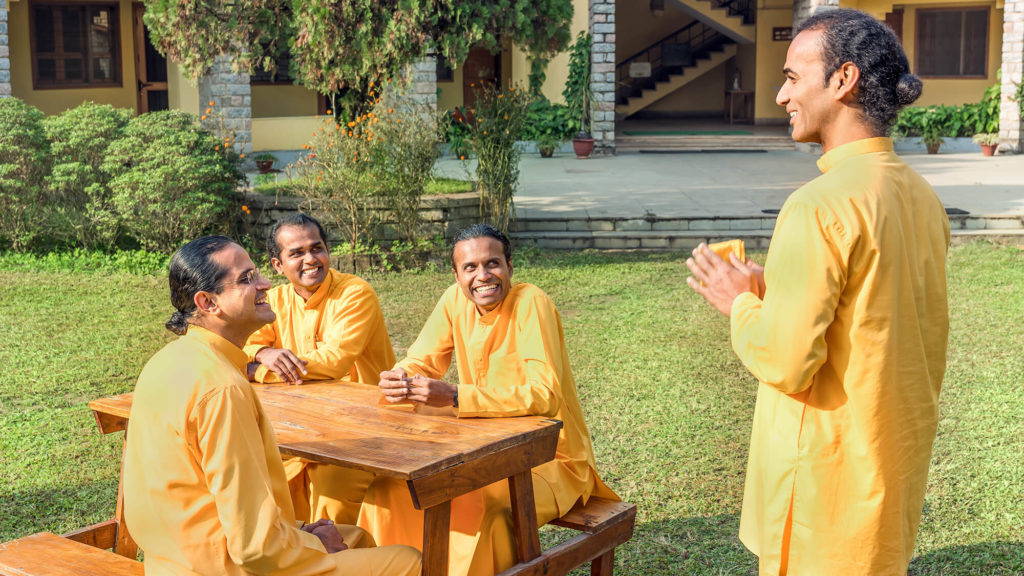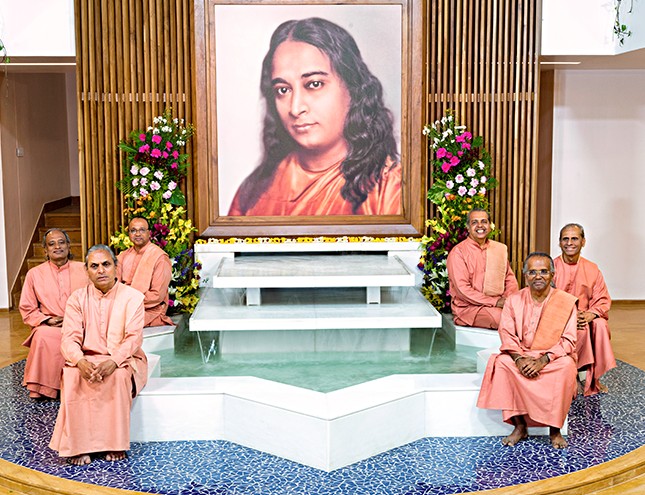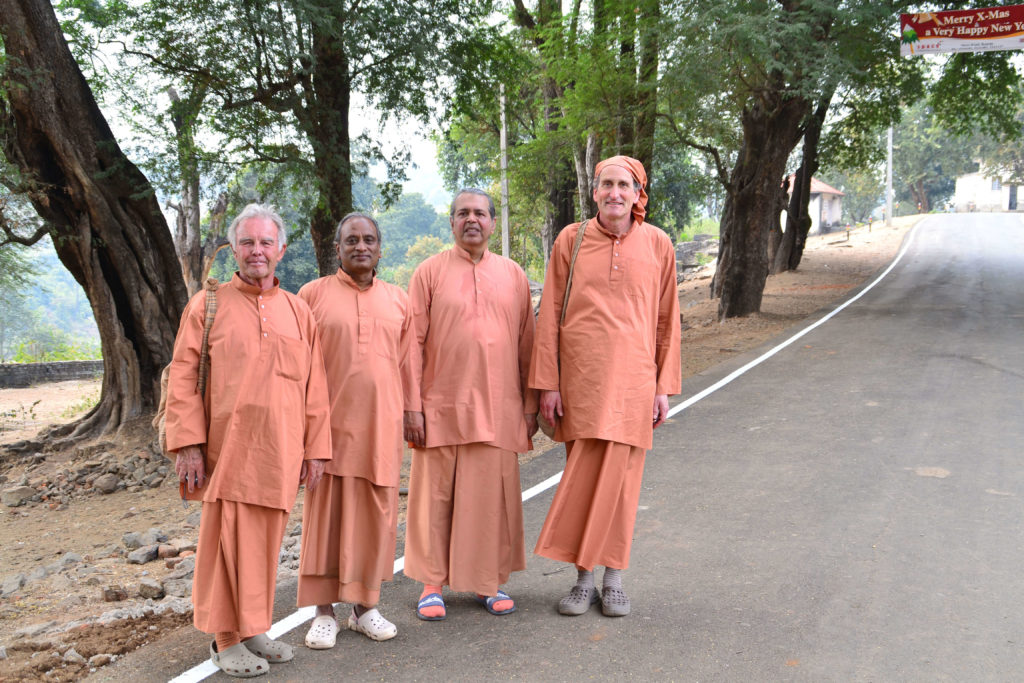Here I lay at Thy feet
My life, my limbs, my thoughts and speech.
For they are Thine; for they are Thine.
— Paramahansa Yogananda
There are four stages of monastic life in the YSS ashrams, representing a gradual deepening of one’s commitment to the renunciant life and monastic vows. These stages are not of any fixed length. Rather the spiritual growth of each monastic and the readiness of that renunciant to dedicate himself more fully to this life, are always considered on an individual basis.
Junior Pravesharthi:
The first stage, designated as junior pravesharthi, usually lasts for three years. Junior pravesharthis follow a monastic routine that includes group and individual meditation, praying for those who have requested for prayers, devotional chanting, spiritual study, introspection, recreation, and service in whatever areas are assigned to them.
The monastic programme for the pravesharthis is designed to give the renunciant a fuller understanding of the monastic ideals and way of life. Its emphasis is on helping the pravesharthi to develop the attitudes and habits that will assist him in deepening his spiritual life and attunement with God and the Guru. This first stage of monastic life helps the renunciant to gauge the depth of his desire to embrace the path of renunciation, and at the same time allows those responsible for the renunciant’s spiritual welfare to guide him to an ever deepening understanding of the monastic life.

Senior Pravesharthi
At the end of the junior pravesharthi stage, if both the pravesharthi and his counsellors remain convinced that he is well-suited to ashram life, the pravesharthi will be invited to join the Senior Pravesharthi programme. During the senior pravesharthi period, the renunciant is expected to demonstrate a growing understanding of monastic discipleship by his application of the principles learned at the junior pravesharthi stage. He is also given an opportunity to shoulder more responsibility in his service to the organization.
Brahmacharya
 If after several years, the senior pravesharthi has demonstrated an increasing desire and ability to dedicate his life wholly to seeking and serving God as a YSS monastic, he is invited to take the vow of brahmacharya. (Brahmacharya is a Sanskrit word referring to the discipline and self control of one’s thoughts and actions for the purpose of achieving union of the self with Spirit.) This vow signifies the disciple’s deepening intention to remain a monastic in the ashrams of Yogoda Satsanga Society of India, living by the vows of simplicity, celibacy, obedience, and loyalty to the end of life.
If after several years, the senior pravesharthi has demonstrated an increasing desire and ability to dedicate his life wholly to seeking and serving God as a YSS monastic, he is invited to take the vow of brahmacharya. (Brahmacharya is a Sanskrit word referring to the discipline and self control of one’s thoughts and actions for the purpose of achieving union of the self with Spirit.) This vow signifies the disciple’s deepening intention to remain a monastic in the ashrams of Yogoda Satsanga Society of India, living by the vows of simplicity, celibacy, obedience, and loyalty to the end of life.
After taking this vow, a monk is referred to as a brahmachari. Use of the legal name is dropped and he is given a Sanskrit name that signifies a particular spiritual ideal or quality that he seeks to exemplify or attain. A brahmachari understands that he may be asked to assume greater responsibility in the ashram — perhaps training to conduct devotional programmes, taking on special assignments, or serving in other capacities as directed by those responsible for guiding the monastic spiritually.
Sannyas
The final vow of sannyas represents the renunciant’s total, lifetime commitment to God, Guru, the Paramgurus, and Yogoda Satsanga Society of India; and to the YSS monastic vows and ideals, which he pledges to observe faithfully as a sannyasi of Yogoda Satsanga Society of India. It signifies the monastic’s inner determination of soul to set aside all lesser desires in order to live for God alone, and with unconditional dedication and loyalty to serve Him through the path of Yogoda Satsanga. The sannyas vow is taken only after many years of living the monastic life, and after the brahmacharis have proved to themselves and their superiors that they are ready to make this final commitment. The vow corresponds to that taken by members of the ancient Swami Order in India.
With the complete dedication of one’s life and being to the Divine, the sannyasi strives ever more diligently for perfection of character, of service, and, above all, of love for God. He assumes the sacred responsibility to exemplify the high ideals of Paramahansa Yogananda’s teachings and society; and, through that example, to inspire and encourage others in their divine quest.


To learn more about the opportunity to live a life dedicated to self-improvement, meditation, and service to humanity in Paramahansa Yogananda’s ashrams, we invite you to contact us.

























